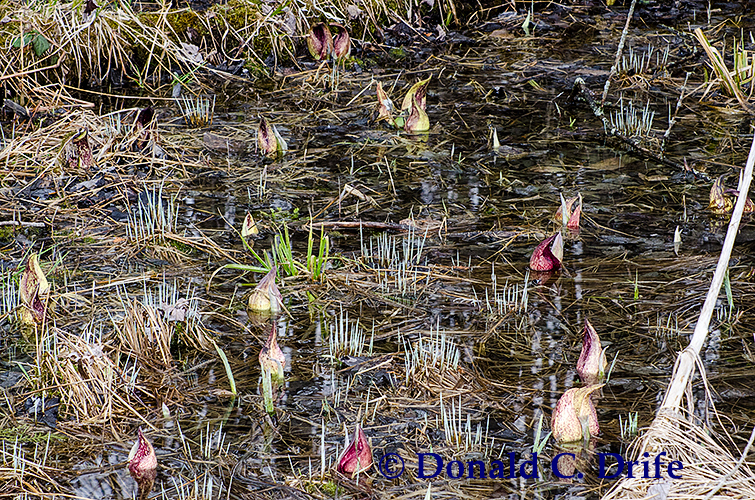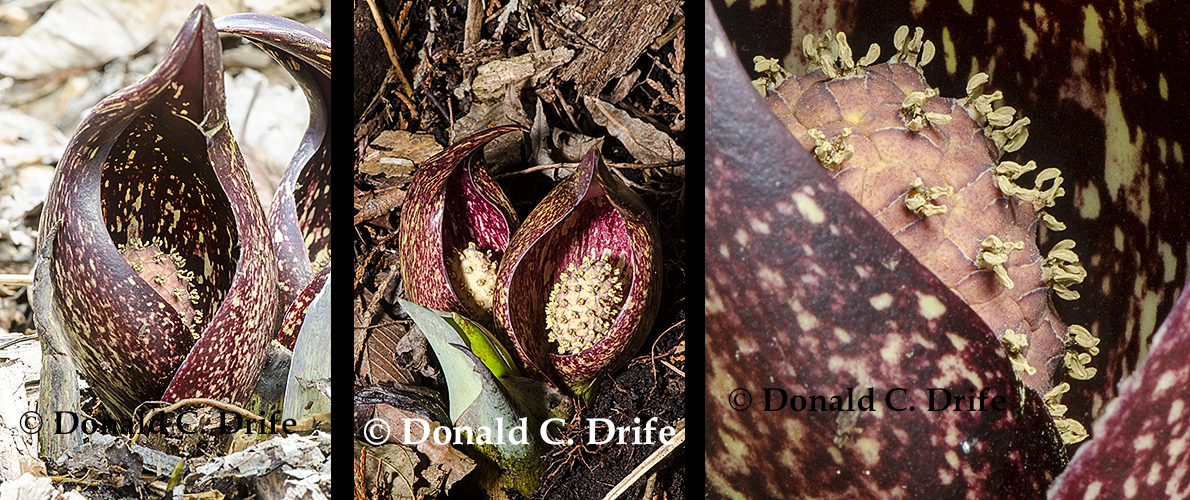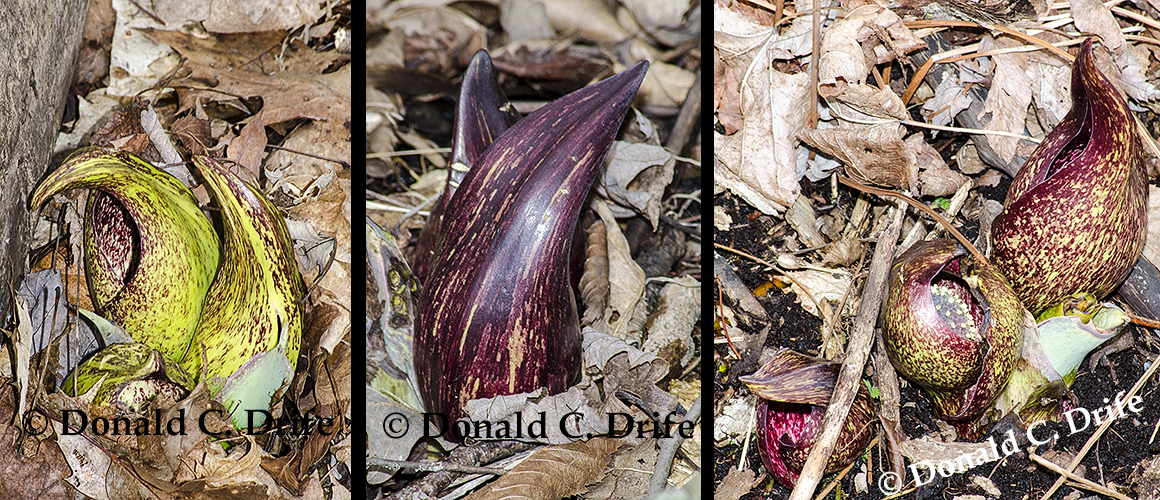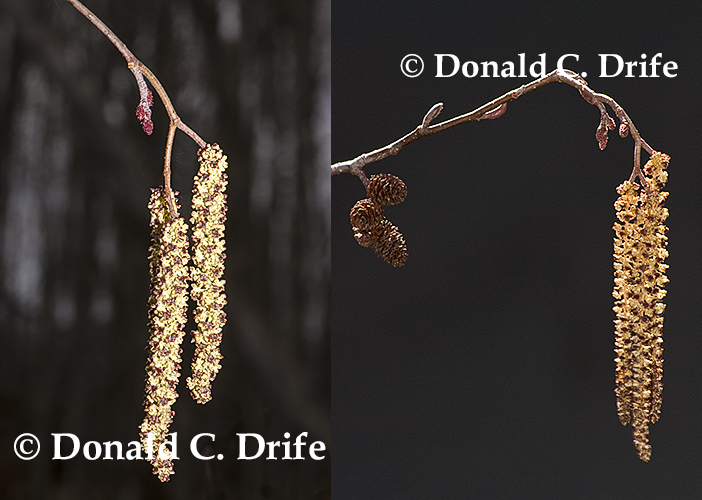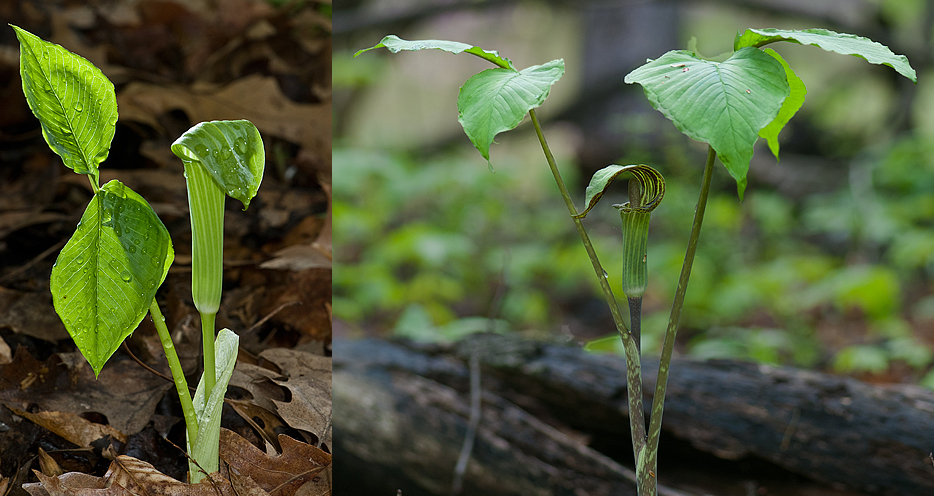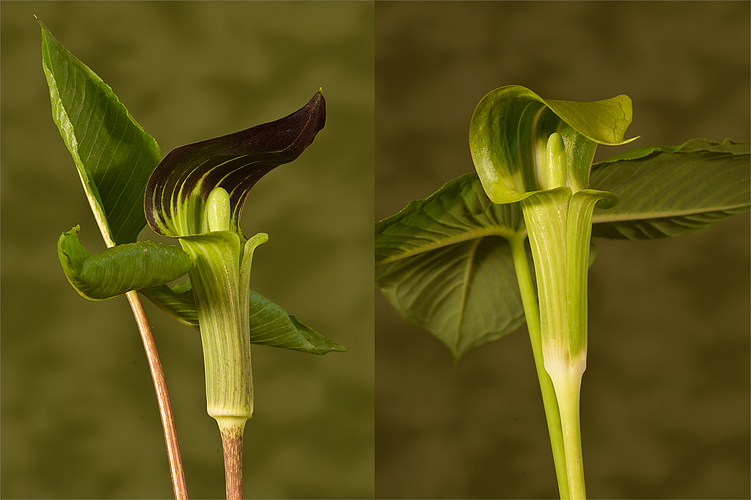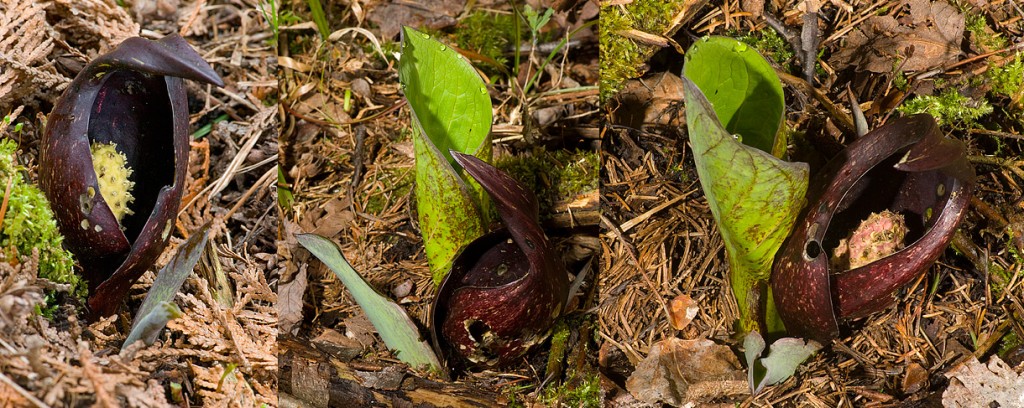Spring is beginning to explode in Southeastern Michigan. I saw the first Woodchuck (Marmota monax) of the year in our yard. It is a healthy looking female. I watch her burrow entrance every spring. This morning it was filled with winter debris but is now cleaned out. A thousand crocus bloom in our front yard. However, there are no pollinators on this early nectar source. Turkey Vultures are heading north in their spiraling kettles.
I decide to visit Seven Ponds Nature Center to look for Skunk-cabbage (Symplocarpus foetidus). I hear Red-winged Blackbirds trilling when I pull into the parking lot. This is one of the best signs of spring. I can hear Sandhill Cranes calling, another first for the year. A small V of seven cranes flies over, heading toward the calling cranes. They fly with their necks out-stretched and they quickly upbeat their wings and slowly downbeat. I can see the red on the tops of their heads.
I charge down the trail, scarcely aware of my surroundings, heading to the boardwalk where I observed Skunk-cabbage last fall. I need to slowdown. I need to take in Nature. I need to decompress and enter fully into her world. I force myself not to hurry.
Along the trail to the boardwalk I see Skunk-cabbage blooming. This Jack-in-the pulpit relative is one of the first plants to bloom. Its flowers consist of a center ball (spadex) which is a cluster of individual perfect flowers. It is surrounded by a spathe with an opening to allow pollinators to enter. The flowers are foul smelling and remind me of rotting meat. This smell attracts their main pollinators, flies.
As I lie on the trail photographing the plants I can hear buzzing insects. Honey Bees (Apis mellifera) are visiting the flowers. I have never observed Honey Bees on Skunk-cabbage before. I could not get close enough to see if the bees were gathering pollen or just visiting the flowers. I later check Frank Pellett’s book American Honey Plants. He quotes G[ilbert]. M. Doolittle who states that he values Skunk-cabbage, “more highly than any other pollen-yielding plant or tree, and that there was nothing with which he was familiar so eagerly sought by the bees, nor any source of pollen which so greatly stimulated brood rearing.”
The spathe color varies from dark maroon to a yellow-green with reddish speckles. I do not know if the color is related to the age of the plants or is simply a variation. Farther along the trail I smell a few damaged plants. Their odor is unpleasant, reminding me of a skunk’s scent but without the faint sweet smell.
Speckled Alder (Alnus incana subsp. rugosa) is not quite in flower along the boardwalk. The yellow male catkins are expanding but not yet producing pollen. The small, red, female flowers are developing.
Beavers (Castor canadensis) have a lodge along the shore of one of the lakes. This colony does not need a dam because the lake is naturally deep enough for their needs. They are cutting Speckled Alder for food. Branches from one of the Soft Maples, stripped of bark, are placed on the top of the lodge.
As I walk back to my car my pace is slow. When I surround myself in Nature I unwind. I never know what I will see, even walking in a familiar area. I just get out and look. On this walk I have seen only familiar old friends that I know at a glance; however, it is still rewarding to renew these old friendships.
March 13, 2016
Copyright 2016 by Donald Drife
Webpage Michigan Nature Guy
Follow MichiganNatureGuy on Facebook


